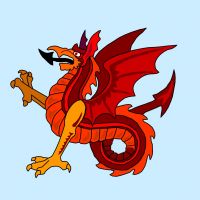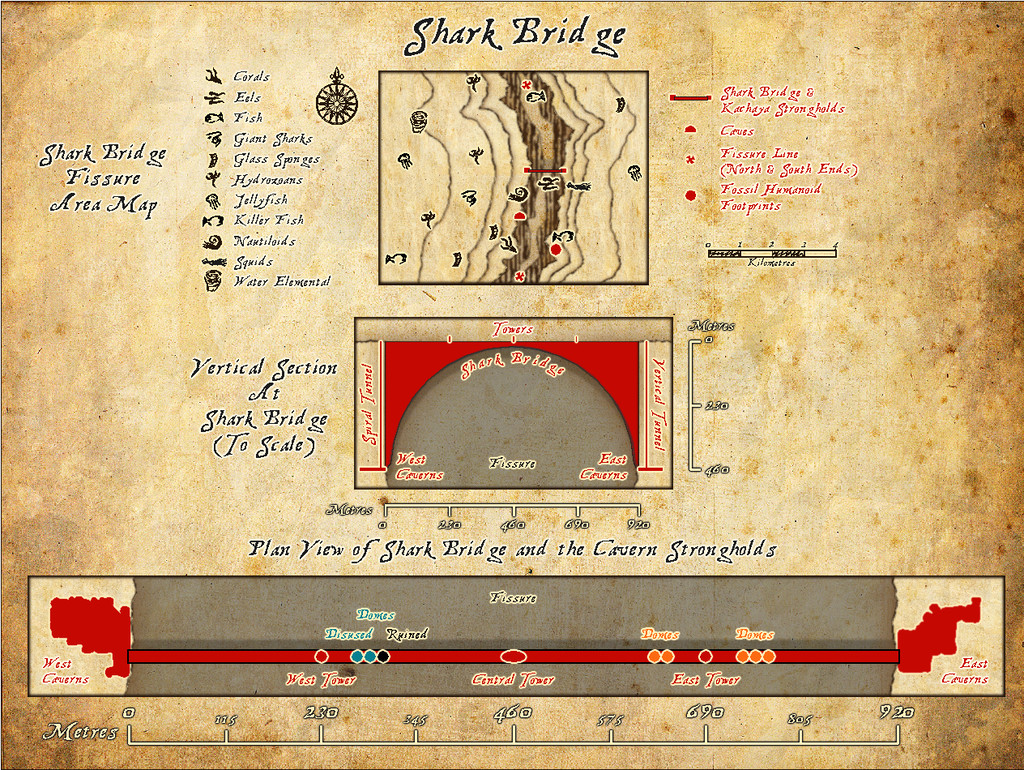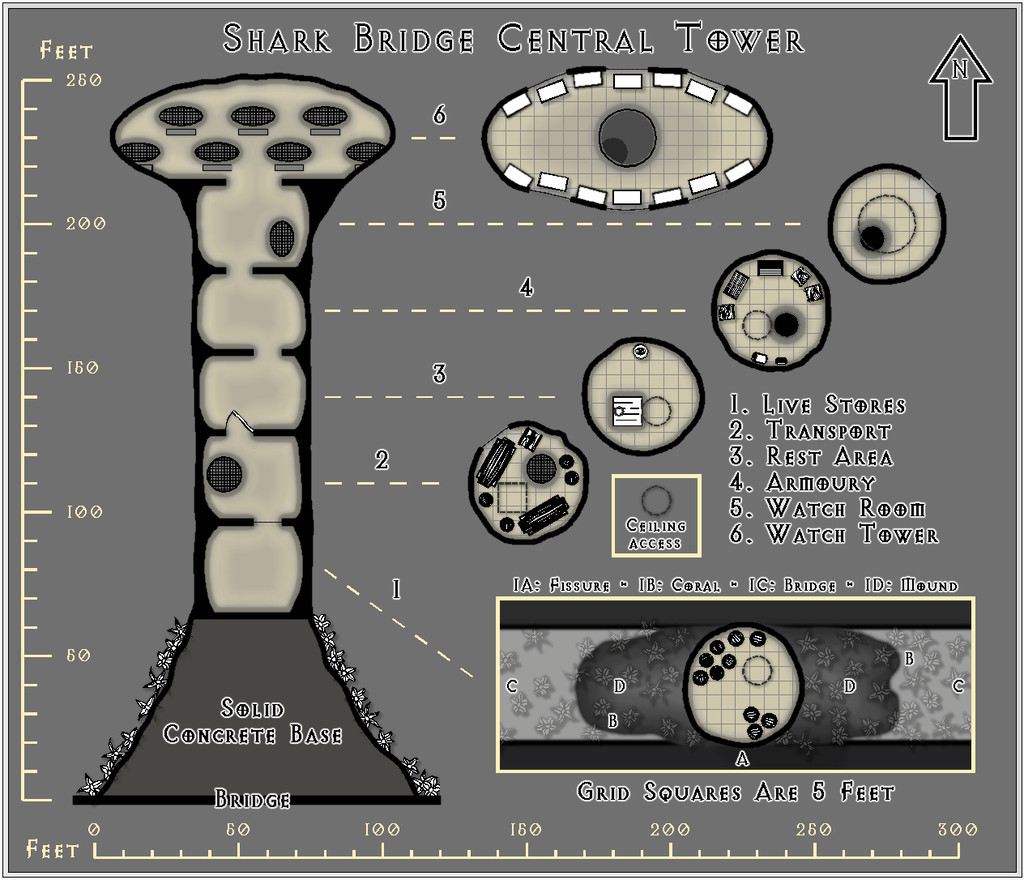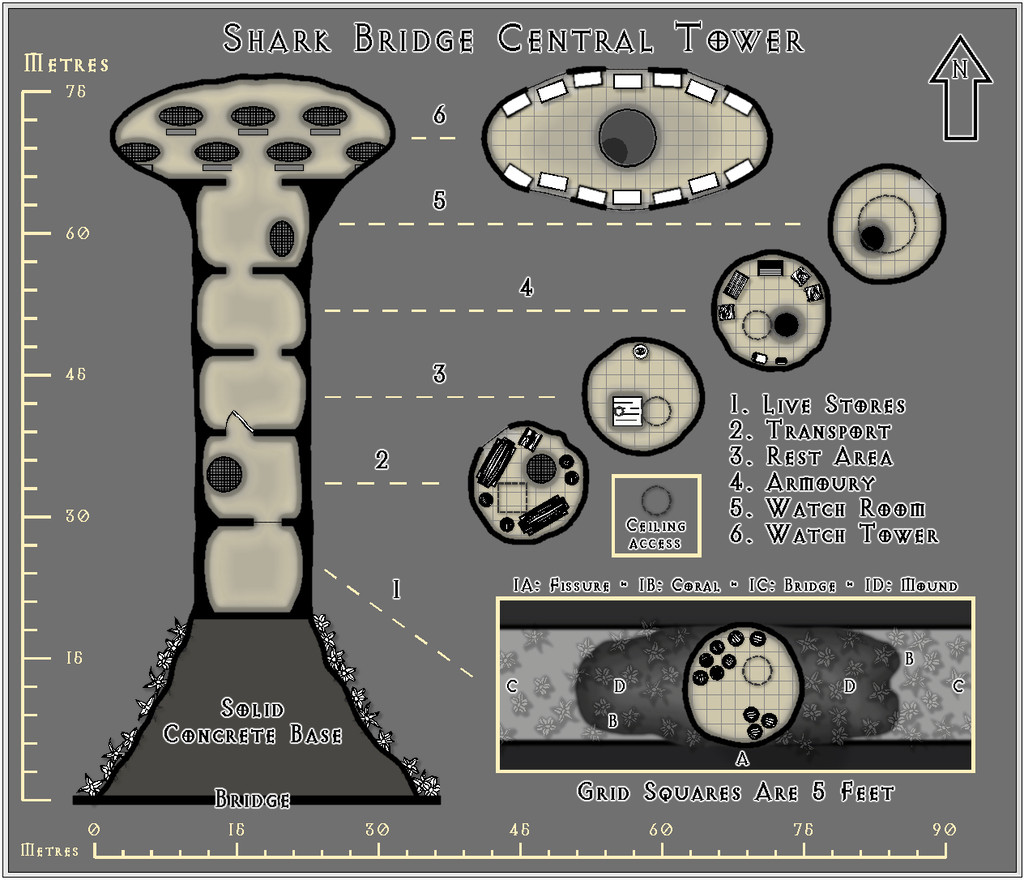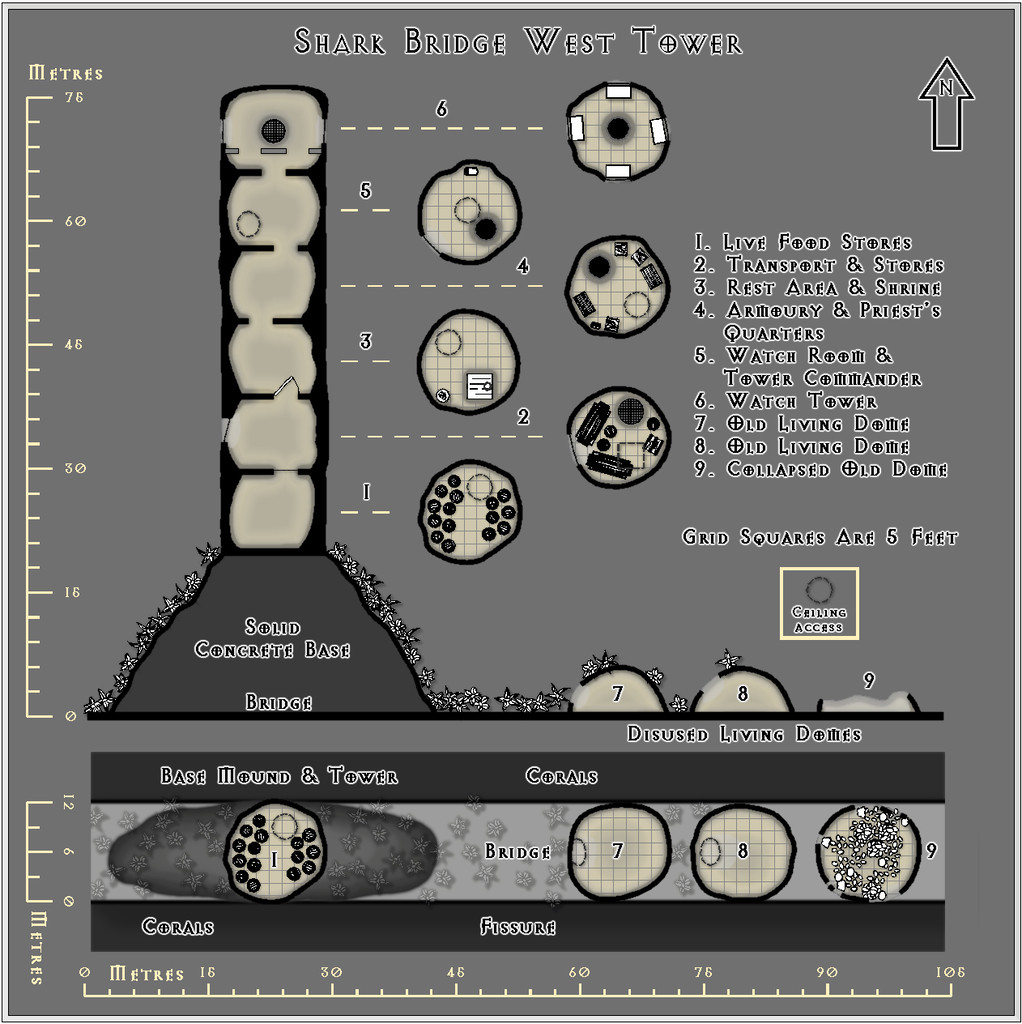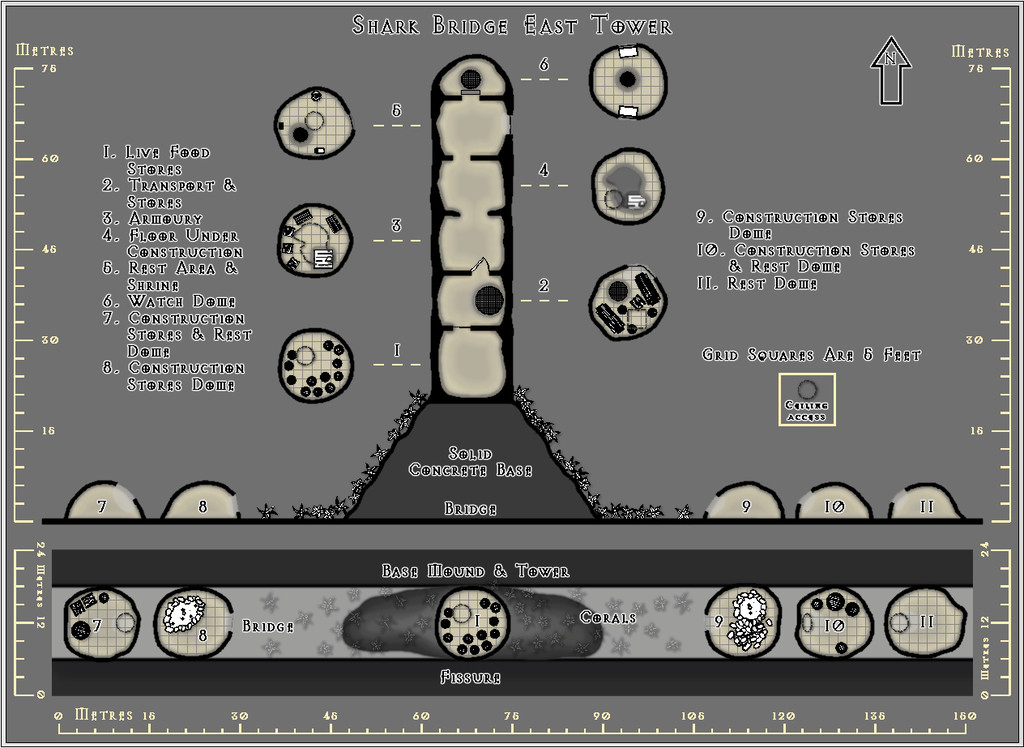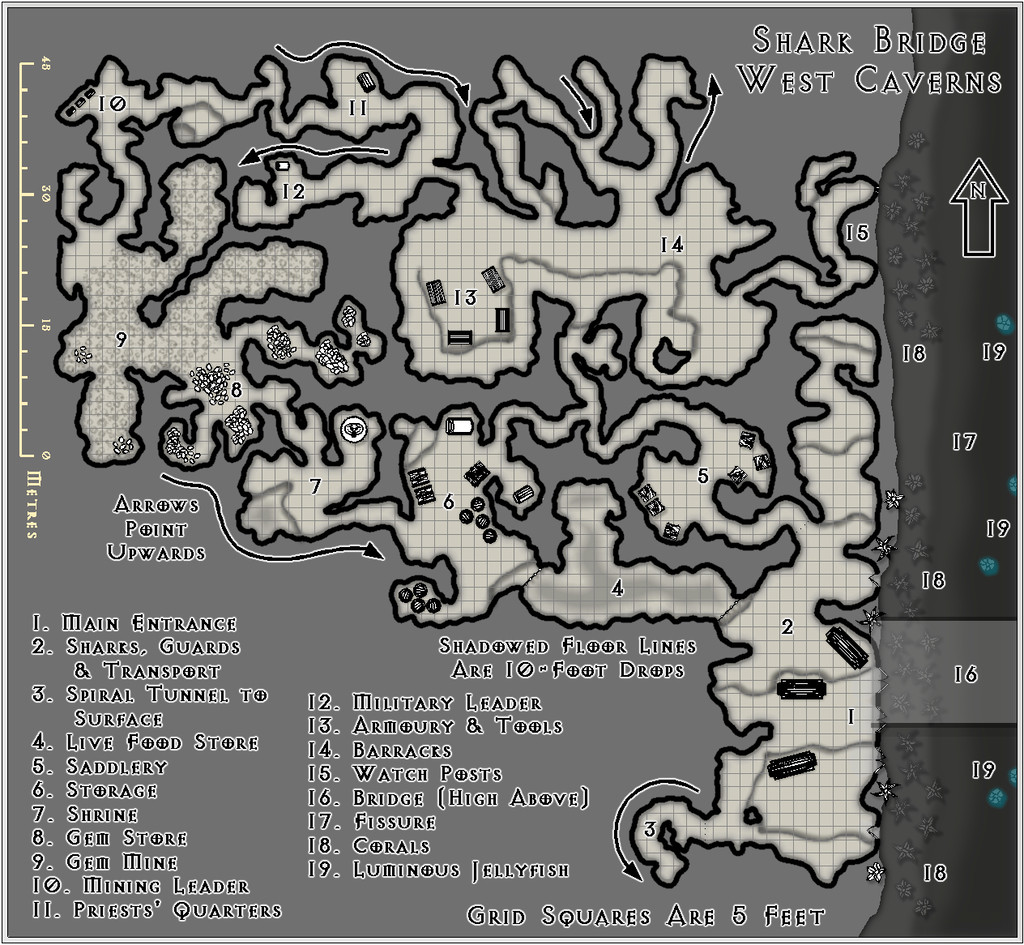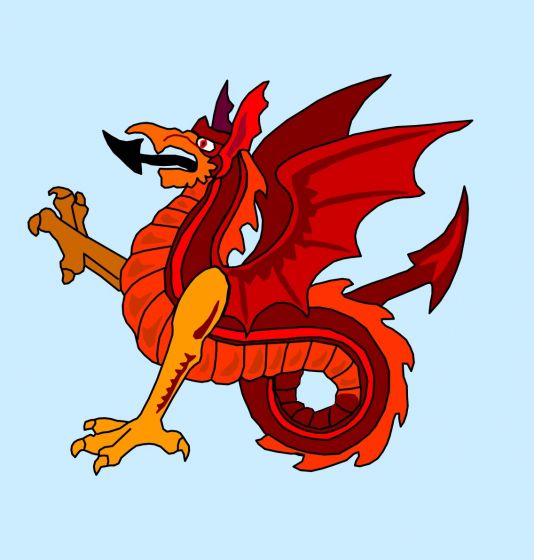
Wyvern
Wyvern
About
- Username
- Wyvern
- Joined
- Visits
- 3,141
- Last Active
- Roles
- Member
- Points
- 5,368
- Rank
- Cartographer
- Badges
- 24
-
Community Atlas: Errynor - Shark Bridge
Continuing with the sea-floor mapping begun with the Aak and the Aak Hills maps from "my" corner of Alarius, this time I swapped to the opposite corner of Errynor Map 01, to map the Kachayan stronghold marked by the mysterious sea-bed bridge structure crossing the Clawmark fissure line labelled "10" there:
I'd decided already there should be watchtowers on the bridge, and cave strongholds below it, one on each side of the fissure's cliffs. While it might have been nice to visualise the bridge as like the Map 01 symbol, a classic hump-backed arch rising high over the fissure itself, given the fissure was to be around 3,000 feet (over 900 metres) wide at the nominal "crossing point", that seemed impractical - and maybe a bit too "goldfish bowl ornament". So I opted for an arch set in the fissure, with a level bridge top resting on it instead. A vast arch by medieval standards, regardless.
Then I hand-sketched some to-scale ideas from these parameters, and quickly realised I needed a series of drawings to better visualise the general area around the bridge, give an impression of its size and nature, and show where the various Kachayan settlements were on and around it. This led to the Shark Bridge map, albeit it was actually the last map prepared in CC3+, because I needed a clear impression of the appearance of the towers and caverns first to be able to add them correctly to it.
The two versions allow switching between Imperial and Metric scales (via a toggle in the Atlas version, if all goes to plan).
Partly because I'd been mapping extensively in another style for quite some time to reach this point, partly for contrast, and as an opportunity to explore a - to me - new mapping style, I chose the Treasure Maps style from the October 2011 Cartographer's Annual, including its Treasure Map Deadhand font. I rather like this parchment-look texture, where you can't be quite certain it isn't really the surface of an old driftwood plank, with the map lightly cut into its surface in gentle relief.
It has the added advantage of coming with vector symbols drawn in a style that's quite easy to copy, so I drew-up my own not-symbols (they're just drawn shapes in CC3+, not "true" symbols) for the near-sea floor features I'd randomly added from an amended version of my deep-sea encounters & features lists prepared for the original Errynor mapping. As usual, there's more detail in the accompanying PDF and text-file notes.
For the detailed mapping, like Aak, I chose another black-and-white style - monochrome vision only in the lightless deep oceans! This time, I went with the Black & White Dungeons style from the December 2010 CA, labelled using the Avalon Quest font from the 2012 CA. Three maps for the towers along the bridge top, each with a vertical section and individual floor plans, plus a toggle option to show Metric or Imperial scale lines (though the grid is standardised at five-feet-squares only):
Then one more each for the West and East caverns respectively (floor plans only), again with the option of alternating scalebars:
Each separate map comes with its own PDF and text-file notes.
The tower designs were based on my own previous notes regarding Kachayan sea-bed surface architecture, while the Caverns used mildly reworked versions of more random layouts created by the Curufea's Random Cave Map Generator website, like that for Aak village.
-
City of Nyxotos for the Community Atlas
Mystara rather passed me by @Tonnichiwa, as I'd moved on to my own version of D&D, and other RPG systems, even by the time it first featured, as the Known World (in Module X1 "The Isle of Dread" according to online sources, in 1981). I have gone back in more recent times and looked over some of what was published for the Known World/Mystara setting, though after getting back strongly involved with D&D only when 5e appeared, I've concentrated more on finding past details for the Forgotten Realms setting, because of its intimate connection with 5e from the outset.
-
CA style development - "Darklands City" (issues for September and December 2021)
-
Where can I find great resources for the creation of a subterranean world?
For the crystal city concept, it may depend exactly how you envisage it. For a large-area map such as the Dungeon Worlds Annual will let you create, you could perhaps repurpose some of the standard CC3+ overland map symbols, like glaciers or icebergs (though you may have to get creative about hiding what are intended as water lines for the latter!), and making use of the varicolor options to recolour other features - and also with CD3 house symbols, for instance, if you wanted to map the city itself, or parts of it, in more detail.
It's definitely worthwhile to take some time to look through all the symbol catalogues you have available, and make a note of any symbols that might work in such map creation, even if that's a long way from what the symbol was originally meant to be! As you can resize any symbol in CC3+, imagine too how it might look if a given symbol were larger or smaller, or a different colour (which you can set and see while you're browsing through each symbol catalogue that includes varicolor symbols).
-
Lighting Exclusions
That's what we like to see - people solving problems before we can leap in with the wrong explanation! 😁
Glows can be tricky beasts, I've found, which sometimes don't work well with other Effects even when they're on different Sheets on a map, and in variable ways (so they might affect some things on a Sheet but not others; I have no explanation for this...). Always worth experimenting though, to see what works best for what you want.


